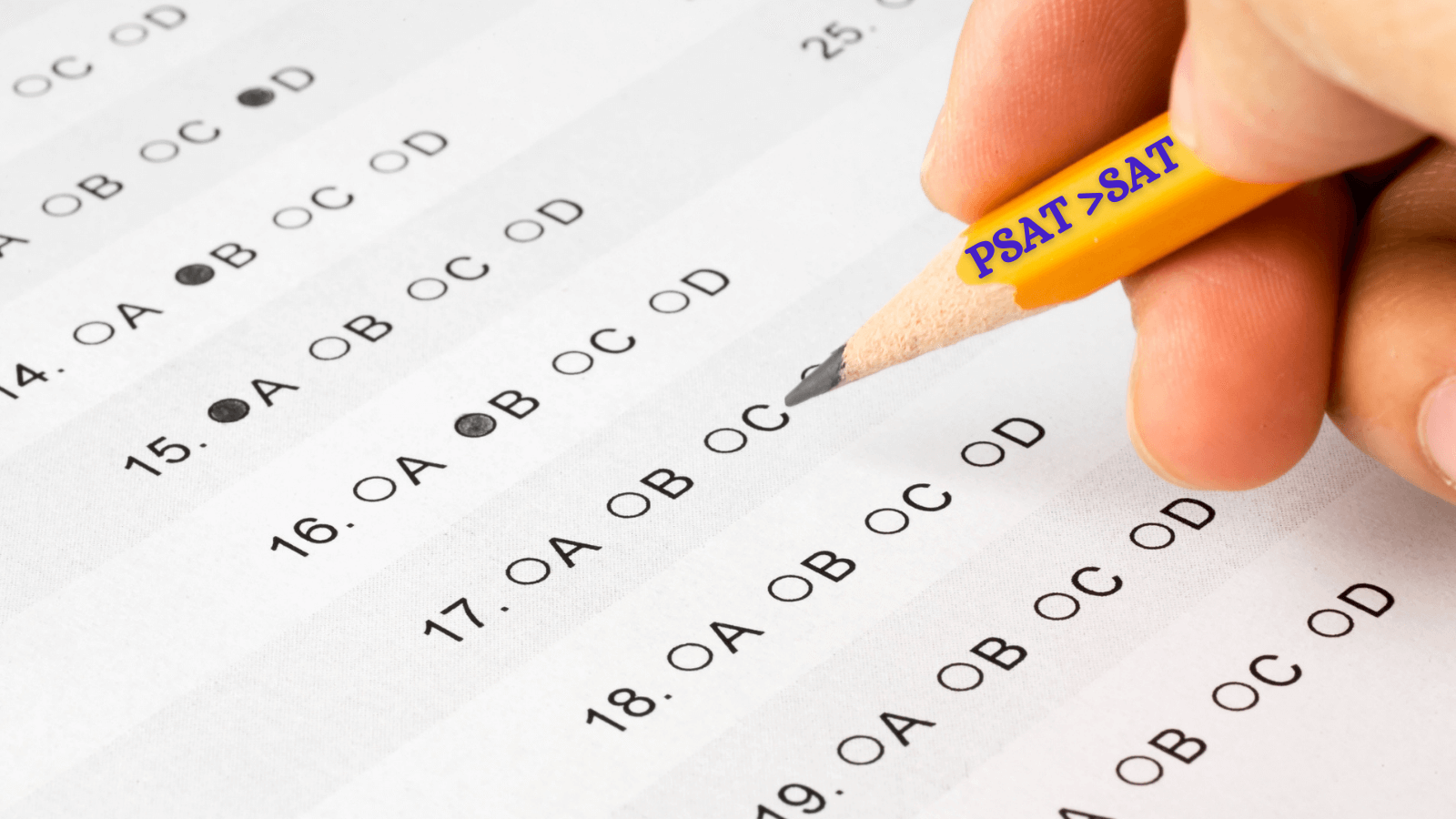Student-centric advice and objective recommendations
Higher education has never been more confusing or expensive. Our goal is to help you navigate the very big decisions related to higher ed with objective information and expert advice. Each piece of content on the site is original, based on extensive research, and reviewed by multiple editors, including a subject matter expert. This ensures that all of our content is up-to-date, useful, accurate, and thorough.
Our reviews and recommendations are based on extensive research, testing, and feedback. We may receive commission from links on our website, but that doesn’t affect our editors’ opinions. Our marketing partners don’t review, approve or endorse our editorial content. It’s accurate to the best of our knowledge when posted. You can find a complete list of our partners here.
Average SAT Score by State
 By
Zach Skillings
By
Zach Skillings 
Zach Skillings is the Scholarships360 Newsletter Editor. He specializes in college admissions and strives to answer important questions about higher education. When he’s not contributing to Scholarships360, Zach writes about travel, music, film, and culture. His work has been published in Our State Magazine, Ladygunn Magazine, The Nocturnal Times, and The Lexington Dispatch. Zach graduated from Elon University with a degree in Cinema and Television Arts.
Full BioLearn about our editorial policies

Maria Geiger is Director of Content at Scholarships360. She is a former online educational technology instructor and adjunct writing instructor. In addition to education reform, Maria’s interests include viewpoint diversity, blended/flipped learning, digital communication, and integrating media/web tools into the curriculum to better facilitate student engagement. Maria earned both a B.A. and an M.A. in English Literature from Monmouth University, an M. Ed. in Education from Monmouth University, and a Virtual Online Teaching Certificate (VOLT) from the University of Pennsylvania.
Full BioLearn about our editorial policies

If you’ve taken the SAT, you may be wondering how your performance stacks up against other test-takers. The national average SAT score in 2023 was 1028, while average scores for each state vary. In this guide, we’ll take a look at SAT score averages by state as well as test section. Keep reading to find out how your score compares to other test-takers in your state.
See also: What is a High SAT Score?
What is the national average SAT score?
When discussing average SAT scores, there are three areas to be considered. There’s the average total score, as well as average scores for individual sections of the test. These include the Evidence-Based Reading and Writing (ERW) section and the Math section. Here’s a breakdown of average scores for each section, according to the College Board.
| SAT Test Sections | National Average Scores in 2023 |
| Total Score | 1028 |
| Evidence-Based Reading and Writing | 520 |
| Math | 508 |
Average SAT scores by state
Average SAT scores vary from state to state. A key factor to keep in mind is participation rate, which is the percentage of graduating students in the state that took the SAT during high school. States with higher participation rates typically have lower scores because the pool of test-takers is larger.
Meanwhile, states with lower participation rates generally have higher scores. Because of this, scores between states can only be accurately compared when the participation rates are similar.
Here are the average SAT scores by state in 2023, according to the College Board.
| State | SAT Participation Rate | Total Scores | Evidence-Based Reading and Writing Scores | Math Scores |
| Alabama | 3% | 1161 | 592 | 570 |
| Alaska | 30% | 1082 | 553 | 529 |
| Arizona | 11% | 1183 | 596 | 587 |
| Arkansas | 2% | 1192 | 610 | 582 |
| California | 25% | 1083 | 546 | 536 |
| Colorado | 90% | 996 | 508 | 488 |
| Connecticut | 93% | 1007 | 512 | 495 |
| Delaware | 95% | 958 | 489 | 469 |
| District of Columbia | 100% | 969 | 495 | 474 |
| Florida | 90% | 966 | 503 | 463 |
| Georgia | 53% | 1054 | 539 | 515 |
| Hawaii | 30% | 1114 | 565 | 549 |
| Idaho | 95% | 970 | 494 | 476 |
| Illinois | 96% | 970 | 492 | 478 |
| Indiana | 100% | 971 | 489 | 482 |
| Iowa | 2% | 1208 | 610 | 598 |
| Kansas | 2% | 1245 | 626 | 619 |
| Kentucky | 2% | 1208 | 616 | 592 |
| Louisiana | 3% | 1194 | 611 | 583 |
| Maine | 38% | 1080 | 551 | 529 |
| Maryland | 71% | 1008 | 515 | 493 |
| Massachusetts | 57% | 1112 | 560 | 551 |
| Michigan | 97% | 967 | 493 | 474 |
| Minnesota | 3% | 1201 | 601 | 599 |
| Mississippi | 1% | 1184 | 601 | 583 |
| Missouri | 3% | 1191 | 603 | 588 |
| Montana | 5% | 1193 | 607 | 586 |
| Nebraska | 1% | 1252 | 631 | 621 |
| Nevada | 6% | 1166 | 591 | 576 |
| New Hampshire | 82% | 1035 | 526 | 508 |
| New Jersey | 64% | 1066 | 538 | 528 |
| New Mexico | 94% | 901 | 458 | 444 |
| New York | 62% | 1039 | 522 | 516 |
| North Carolina | 24% | 1127 | 570 | 557 |
| North Dakota | 1% | 1287 | 652 | 634 |
| Ohio | 18% | 1044 | 525 | 519 |
| Oklahoma | 18% | 953 | 486 | 468 |
| Oregon | 24% | 1125 | 574 | 551 |
| Pennsylvania | 48% | 1078 | 547 | 531 |
| Puerto Rico | N/A | 974 | 510 | 465 |
| Rhode Island | 95% | 958 | 489 | 468 |
| South Carolina | 50% | 1028 | 527 | 501 |
| South Dakota | 1% | 1208 | 605 | 602 |
| Tennessee | 4% | 1191 | 606 | 585 |
| Texas | 71% | 978 | 497 | 481 |
| Utah | 2% | 1239 | 621 | 618 |
| Vermont | 45% | 1099 | 563 | 536 |
| Virgin Islands | N/A | 929 | 488 | 441 |
| Virginia | 49% | 1113 | 569 | 544 |
| Washington | 37% | 1081 | 549 | 532 |
| West Virginia | 90% | 923 | 478 | 445 |
| Wisconsin | 2% | 1236 | 615 | 621 |
| Wyoming | 1% | 1200 | 604 | 596 |
How important is the average SAT score?
State and national average SAT scores can be good benchmarks, but they shouldn’t be your only gauge of success. You should create a goal score that is based on the school you’re applying to. To get an idea of what you should aim for, check the average scores of the colleges you’re applying to. The more selective the school, the higher the average score will be. For some students, scoring higher than the state or national average may be good enough to get into their dream school. For others, it may not be good enough.
In the end, all you can do is try your best, study hard, take practice tests and ask for help when you need it. If you do all that, you’ll be well on your way to earning a high score and gaining admission to the college of your dreams.
Also see: This year’s SAT test dates
A note on the SAT and ACT
As you prepare to take the SAT, you should be sure to note that some colleges weigh the ACT more heavily than the SAT. This is especially common at institutions in the Midwest. Make sure to check whether the institutions you’re interested in have a preference for either test. This could affect your decision of which to prioritize.
Related: Average ACT scores by state
Additional resources for students preparing for the SAT
If you’re getting ready for the SAT, you’re probably getting ready to enter the busiest part of the admissions process. The process can be overwhelming, but luckily, we’ve got resources at your disposal. We can help you with some common questions:
- When should you take the SAT or ACT?
- How do you find the right test prep tutor?
- What are the differences between the SAT and ACT?
- What if I score really low on the SAT?
Once you’ve got your tests out of the way, you’ll be getting into your college application process. We’ve got answers on whether you should apply early action or early decision. We can also help you find financial safety schools, choose a college, and interpret your financial aid award letter. Good luck with the process, and don’t forget to check back if you have any questions. Also, don’t forget to apply for all the scholarships you are eligible for while you qualify!
Frequently asked questions about the average SAT score
Is a 1200 a good SAT score?
How rare is a 1300 SAT test score?
How high can you score on the SAT?




 SAT" printed on his pencil">
SAT" printed on his pencil">
